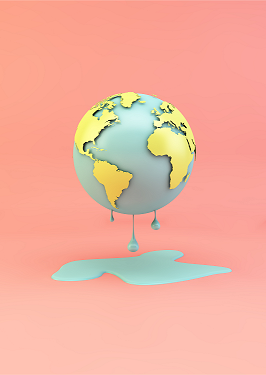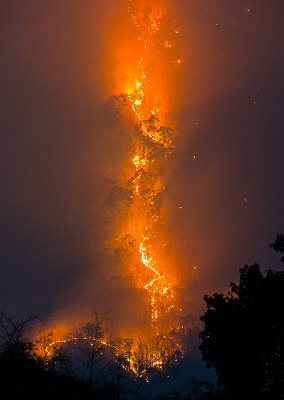October 24 marks the International Day against Climate Change, with the aim of raising awareness among the world’s population about the negative effects of climate change on mankind, animals and the environment.
Main effects of climate change
- Rising temperatures
As the concentration of greenhouse gases rises, so does the planet’s surface temperature. The past decade, from 2011 to 2020, has seen the greatest warming to date. Since the 1980s, each decade has been warmer than the previous one. Almost all areas have seen more heat waves and hotter days. Rising temperatures lead to an increase in heat-related illnesses. Wildfires occur more easily and spread more rapidly in warmer environments. Arctic temperatures have risen at least twice as fast as the global average.
- More powerful storms
Destructive storms have become more intense and more frequent in many regions. As temperatures rise, more moisture evaporates, causing flooding and extreme precipitation, leading to more destructive storms. Ocean warming also affects the frequency and magnitude of tropical storms. Cyclones, hurricanes and typhoons feed on the warm waters of the ocean surface. These storms often destroy homes and entire communities, resulting in huge losses in the economy and human lives.
- Increasing droughts
Climate change is changing the availability of water, making it scarcer in more regions. Global warming is creating water shortages in already dry regions, and is increasing the risk of agricultural droughts that affect crops and ecological droughts that increase the vulnerability of ecosystems. Droughts can also trigger destructive sand and dust storms capable of shifting billions of tons of sand from one continent to another. Deserts expand and land suitable for growing crops is reduced. Many people face regular periods of water shortages.
- Rising ocean levels and water warming
The ocean absorbs most of the heat generated by global warming. The rate at which the ocean has been warming has increased significantly over the past two decades at all depths. As the ocean warms, its volume increases because the water expands. Melting ice sheets and icebergs cause sea levels to rise, threatening coastal and island communities. In addition, the ocean absorbs carbon dioxide and prevents its accumulation in the atmosphere. But higher carbon dioxide content causes the ocean to become more acidic, endangering both marine species and coral reefs.
- Disappearance of species
Climate change threatens the survival of terrestrial and oceanic species. These risks increase as temperatures rise. Due to the power of exacerbated climate change, species are becoming extinct globally at a rate 1,000 times greater than at any other time in recorded human history. One million species are at risk of becoming extinct in the coming decades. Forest fires, extreme weather and pest invasion with the emergence of diseases are threats related to climate change. Some species will be able to adapt geographically, but others will not.
- Food shortages
Changes in climate and increased extreme weather conditions are some of the reasons for a global increase in malnutrition in the poorest communities. Fish stocks, crops and livestock may disappear or become less productive. Due to continued ocean acidification, marine resources that feed billions of people are at risk. Changes in the snow and ice caps have altered the food supply generated by livestock, hunting and fishing. Extreme heat can reduce water and pasture for livestock, causing a decrease in agricultural production and affecting livestock.
- More health risks
Climate change poses the greatest threat to human health, through pollution, disease, extreme weather events, forced displacement, mental health pressures, as well as increased hunger and malnutrition in places where people cannot produce or find enough food. Each year, environmental factors kill nearly 13 million people. Climate change patterns are causing disease. Extreme weather events are causing more deaths and hampering the ability of health systems to withstand the strain.
- Poverty and displacement
Climate change increases the factors that drive and keep people in poverty. Flooding can wipe out slums, destroying homes and communities. Heat makes it difficult to carry out outdoor work. Water shortages can affect crops. Over the last decade (2010-2019), weather-related events displaced a total of approximately 23.1 million people on average per year, increasing their likelihood of falling into poverty. Many refugees come from countries that are more vulnerable and less prepared to adapt to the effects of climate change.


